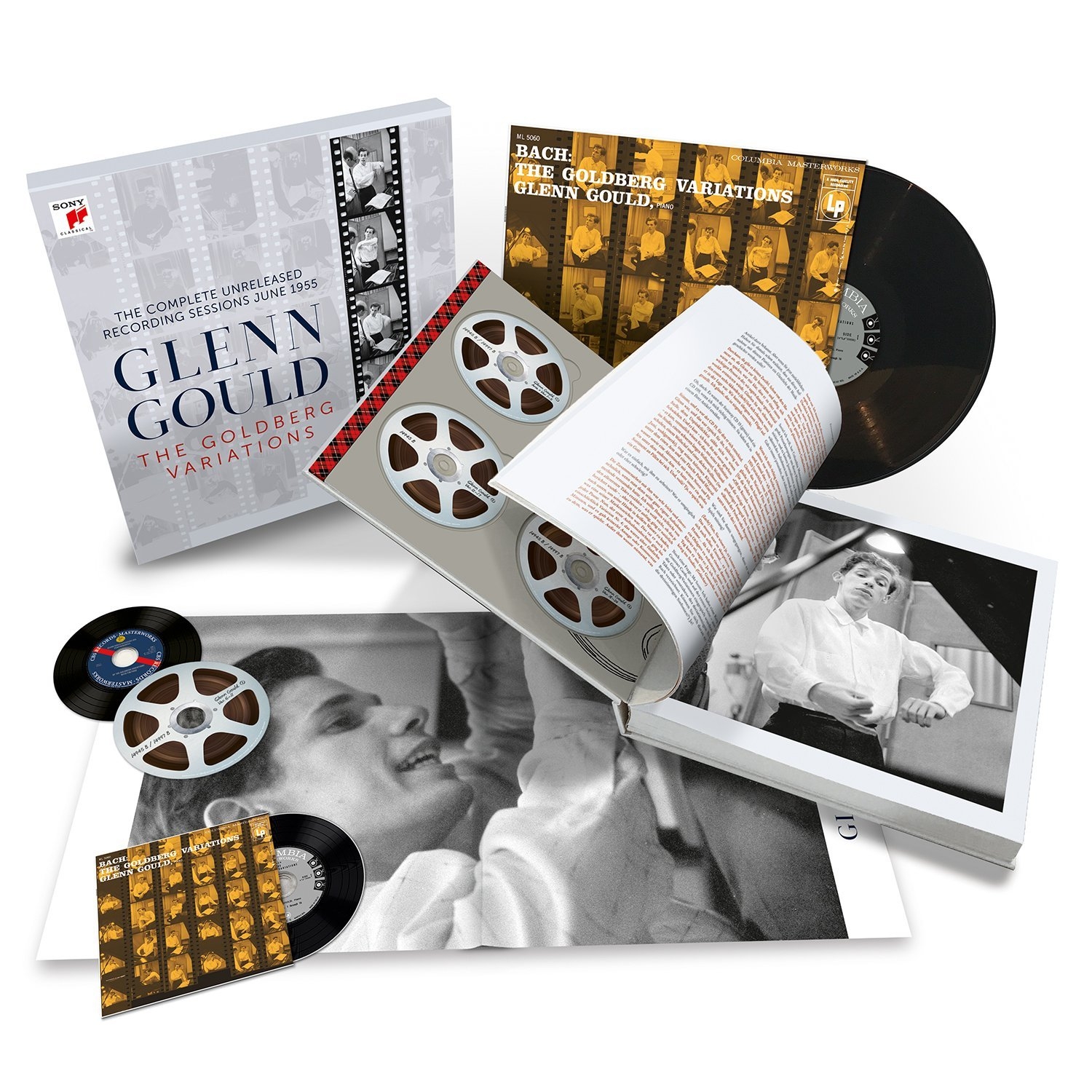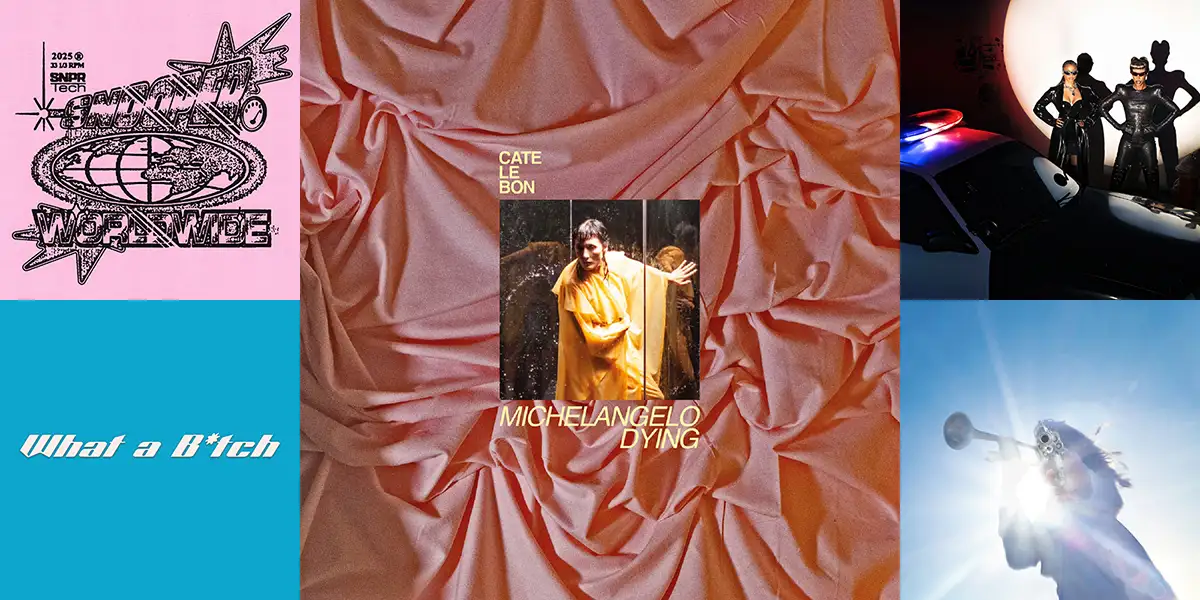
Thirty Two Short Facts About Glenn Gould’s Complete Goldberg Variations
"It is, in short, music which observes neither end nor beginning, music with neither real climax nor real resolution, music which… rests lightly on the wings of the unchecked wind.”
-Glenn Gould on The Goldberg Variations

1) Sony Classical has released the definitive version of Glenn Gould’s now seminal recording of Bach’s Goldberg Variations. The new set Glen Gould: The Goldberg Variations. The Complete Unreleased Recording Sessions doesn’t mince its words (or melodies). It’s epic. No, seriously, unless they decide to ship you Glenn’s piano and answering messages, this is the only set you’ll need.
2) The back labeling reads rather humorously that this is “probably” the most definitive release of this recording. Let’s see, it includes 7 CDs, 1 180g vinyl and a 280 page hard-cover coffee-table book. One person’s overkill is an aficionado’s treasure chest of delights. But before we dig in…
3) Gould didn’t take long to make his presence known. The original 1955 recording is Gould’s debut album. It would go on to become one of the most well-known piano recordings setting the bar practically out of reach. A career was launched.
4) While it came out the same year as Bill Haley & His Comet’s “Rock Around the Clock”, a tune many site as the kick-start to rock and roll, Gould’s recording is reported to have sold around 40,000 copies by 1960. The album’s 191 reduxed recording would hit two million. Rock and roll may have been coming up the pipe and Beatlemania was just around the corner but Gould’s showed that classical could still sell.
5) Johan Sebastian Bach wrote the aria and set of 30 variations on sleepless nights. Not, his, however. Former Russian ambassador to the electoral court of Saxony, Count Kaiserling, was battling insomnia when he called upon virtuoso harpsichordist Johann Gottlieb Goldberg who was living in his home at the time. Bach was giving the protégée lessons at the time, overheard the Count opine that he wished for smooth but lively melodies to cheer him in the wee smalls and, well, history would be made.
6) Bach originally composed the pieces for harpsichord.
7) While Bach generously would name his masterpiece after Goldberg, the Count liked to lay claim to them himself. He could be heard at night saying “Dear Goldberg, do play me one of my variations”. Well, we know what stuck. After all, Gould wouldn’t go on to record the Kaiserling Variations, right?
8) For his efforts, Bach was exceptionally rewarded. Count would give the composer a golden goblet. Was it fine wine filled to the brim inside? No. The cup held 100 Louis d’or coins.
9) Of course, the likelihood of all that actually happening is still questioned among scholars. The account was penned 60 years after the events by biographer Johann Nikolaus Forkel who may have needed some embellishments for his book.
10) A possible red flag to the truthfulness of the account falls upon the age of Goldberg at the time the tale is to have taken place. While certainly a gifted player, he was only 14.
11) Controversy abounds. German musicologist Arnold Schering doubts that Bach even composed the aria.
12) Released in 1741, the work was actually published within Bach’s lifetime, a rarity for the composer.
13) Gould would relay in 1959 that he’d begun studying the Goldberg Variations in his late teens. It would be one he would learn to play without a teacher.
14) Though Gould would give no public performances after 1964, the fortunate few would have a chance to hear the Variations live for the first time a year before they were recorded. They would become a staple of Gould’s concerts for the next 10 years.
15) The ink was still drying on Gould’s contract with Columbia Masterworks Records when the album was completed in Manhattan over six days in June of 1955.
16) The suggestion of the Goldberg Variations, a piece then relatively obscure, was questioned by perturbed executives. Gould you say in a 1981 interview the he thought “the objections [Columbia] had, which were mild and expressed in a most friendly fashion, were quite logical. I was twenty-two years old and proposed doing my recording debut with the Goldberg Variations, which was supposed to be the private preserve… They thought that possibly some more modest undertaking was advisable."
17) Thankfully, even at 22 Gould was strong willed and held his ground but before he could record one of the most influential and best-selling classical recordings of all time he needed a few things. Showing signs of many eccentricities to come, Gould carted a special piano char into the studio along with many bottles of pills, some winter clothing even though it was summer and some hot water in which to soak his hands before playing. The piece was played on his Steinway (model CD 19) piano which he had acquired earlier that year.
18) Bach’s composition is still seen as exceptionally demanding to play but Gould mastered and elevated the piece. He already had a very unique way of playing using a detached staccatissimo style, rapid pacing and hand crossing at times to flush out the piece and add to the vibrancy.
19) To give an idea of Gould’s speed, his recording is only 38 minutes and 34 seconds long. Another Canadian classical pianist, Angela Hewitt, would record the piece in 1999. It’s running length would clock in at nearly 80 minutes.
20) The hefty box set by Sony amazingly captures the meticulous, often obsessive detail Gould had for perfecting his recordings. For example, the introductory aria was recorded 21 times before he was satisfied with how it sounded. It’s something you’ll get to hear for yourself.
21) The Goldberg Variations – The Complete 1955 Recording Sessions CD 1 includes multiple takes of the Aira and Variations 1-5
22) CD 2 showcases the work that went into Variations 6-11
23) CD 3 includes full and partial takes of Varions 12-17
24) CD 4: takes (including an announced rendition of Variation 20) of Variation 18-25
25) CD 5 concludes the exhaustive outpouring of selections with Variations 26-30 and no less than 11 takes of the Aria Remake.
26) For those interested in Gould’s technique (and you should be because it’s fascinating), he’ll tell you himself on CD 6. The disc is a recording of Gould discussing his performances of the Goldberg Variations with Tim Page and touches upon topics such as “The Secret of The Tempo”, “The Importance of the System” and “Arguments On Instruments”. If you are an inspiring piano player, this may be a sort of bible.
27) CD 7 is the complete 1955 recording restored from the original ¼-inch analogue tapes and re mastered using 24 bit / 96 kHz technology.
28) The set also includes a 180g vinyl maintaining the artwork of the original release.
29) The edition comes with a 90 x 60 cm (36 x 24 ) poster and a 280-page hard-cover coffee-table book, featuring 45 sensational, newly discovered photos from the recording sessions, the complete musical score, several essays and an extensive documentation including facsimiles of more than 20 archival documents detailing how an analogue vinyl LP was recorded in the mid-1950s.
30) While one would think the status of this recording would go unrivalled, one person wasn’t completely satisfied. That person was Glenn Gould. Despite multiple takes and attention to the smallest of details, the pianist would later become his own biggest critic stating that the piece was “just too fast for comfort”.
31) A year before his death in 1982, Gould re-recorded the Goldberg Variations. Gone was the showmanship of the original and, in its place, a more calculated way of playing. The comparisons between versions would begin with both showing separate forms of mastery.
32) As for Gould, he’d long abandoned his original stating: "I can no longer recognize the person who did that. To me today that piece has intensity without any sort of false glamour. Not a pianistic or instrumental intensity, a spiritual intensity." That said, this gargantuan revisiting of this legendary recording arrives fittingly on the year Glenn Gould would have turned 85.










